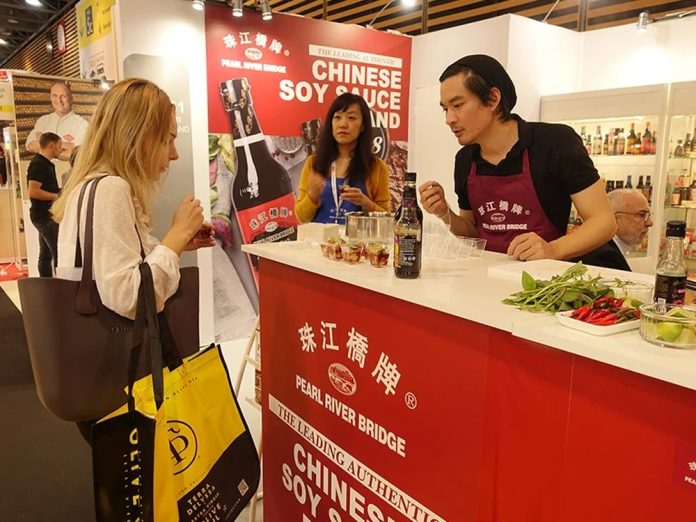Soy sauce is a culinary treasure with a rich history and diverse flavors, whether it’s soy sauce Chinese cuisine relies on or other varieties; proper storage is essential to maintain its freshness and enhance your culinary creations. In this comprehensive guide, we’ll explore the best practices for soy sauce storage, ensuring that you can enjoy its savory goodness for an extended period.
Understanding the Essence of Soy Sauce
Soy sauce, whether Chinese or from other origins, is crafted from a blend of soybeans, wheat, salt, and water. Chinese sauce powder manufacturers oversee the intricate fermentation process, resulting in a sauce rich in umami flavor, making it a versatile ingredient in various dishes.
The Vital Role of Chinese Sauce Powder Manufacturers
Behind each bottle of soy sauce lies the expertise of Chinese sauce powder manufacturers. These artisans follow traditional methods, carefully selecting ingredients, and supervising fermentation to produce high-quality soy sauce.
Choosing the Right Soy Sauce
Before delving into storage, it’s essential to select the right type of soy sauce for your culinary needs. There are various options available, including light soy sauce, dark soy sauce, tamari, and others, each with its unique flavor profile and uses.
Proper Storage Techniques
Preserving the quality of your soy sauce begins with proper storage. Here are some tips to ensure maximum freshness:
Seal it Tightly
After opening a bottle of soy sauce, make sure to seal it tightly after each use. This prevents air from entering the bottle, which can lead to oxidation and flavor deterioration.
Keep it Cool and Dark
Soy sauce should be stored in a cool, dark place, away from direct sunlight and heat sources. Excessive heat can alter its flavor and color, so a cupboard or pantry is an ideal location.
Use an Airtight Container
If you prefer to transfer your soy sauce to a different container, choose an airtight one made of glass or ceramic. Avoid containers made of materials that may react with the sauce, such as metal.
Refrigeration is Optional
While some people refrigerate their soy sauce to extend its shelf life, it’s not strictly necessary. Soy sauce boasts a high salt content, which acts as a natural preservative. If you choose to refrigerate it, ensure the container is tightly sealed to prevent absorbing unwanted odors.
Check for Spoilage
Regularly inspect your soy sauce for any signs of spoilage, such as off odors, unusual colors, or mold growth. High-quality soy sauce typically has a long shelf life, but it’s wise to be vigilant.
Extending the Shelf Life
To maximize the shelf life of your soy sauce, follow these additional tips:
- – Avoid using wet or dirty utensils when scooping out soy sauce, as introducing moisture or contaminants can lead to spoilage.
- – If you notice a layer of salt crystals forming at the bottom of the bottle, don’t worry. This is a natural occurrence and doesn’t indicate spoilage.
- – Consider purchasing smaller bottles if you don’t use soy sauce frequently. Smaller containers are easier to finish before their flavor starts to deteriorate.
Conclusion
Soy sauce, whether it’s Chinese, Japanese, or any other variety, is a culinary marvel that enhances the flavors of countless dishes. By storing it properly and following the guidelines in this ultimate guide, you can ensure that your soy sauce remains fresh and flavorful, enhancing your culinary creations for months or even years to come. Proper soy sauce storage is not just about preserving a condiment; it’s about preserving the essence of umami in your cooking.
Bądź na bieżąco i zostań jednym z ponad 14 tysięcy naszych obserwujących!









![Krzysztof Korab: Pogoń-Sokół Lubaczów zasługuje na awans [VIDEO]](https://elubaczow.com/wp-content/uploads/2024/05/krzysztof-korab-218x150.jpg)
![Pożegnanie tegorocznych absolwentów Zespołu Szkół CKR w Oleszycach [ZDJĘCIA]](https://elubaczow.com/wp-content/uploads/2024/05/438168834_1047532160266522_6745903244679410923_n-218x150.jpg)
![80. rocznica spalenia wsi i mordu na mieszkańcach Wólki Krowickiej [ZDJĘCIA]](https://elubaczow.com/wp-content/uploads/2024/04/745a0605-218x150.jpg)
![Obchody 80. rocznicy pacyfikacji wsi Rudka [NASZA FOTORELACJA]](https://elubaczow.com/wp-content/uploads/2024/04/rudka-80-rocznica-fot-asw-00102-218x150.jpg)
![Bardzo udana Wiosenna Giełda Ogrodnicza w Baszni Dolnej [ZDJĘCIA]](https://elubaczow.com/wp-content/uploads/2024/04/foto-22-1-218x150.jpg)
![Tragiczny wypadek w Nowym Lublińcu [ZDJĘCIA Z ĆWICZEŃ]](https://elubaczow.com/wp-content/uploads/2024/04/745a0190-218x150.jpg)
![4. liga: Pogoń-Sokół Lubaczów nie zatrzymuje się w walce o awans [VIDEO]](https://elubaczow.com/wp-content/uploads/2024/04/745a0018-1-218x150.jpg)
![Rodzina Clarke odkrywa uroki życia w Tajlandii [VIDEO]](https://elubaczow.com/wp-content/uploads/2024/04/clarke-tajlandia-dd-tvn-218x150.jpg)

![„Tajemnice zaginionych artefaktów” w Horyńcu-Zdroju [VIDEO]](https://elubaczow.com/wp-content/uploads/2024/04/tvp-rzeszow-218x150.jpg)








![Krzysztof Korab: Pogoń-Sokół Lubaczów zasługuje na awans [VIDEO]](https://elubaczow.com/wp-content/uploads/2024/05/krzysztof-korab-100x70.jpg)